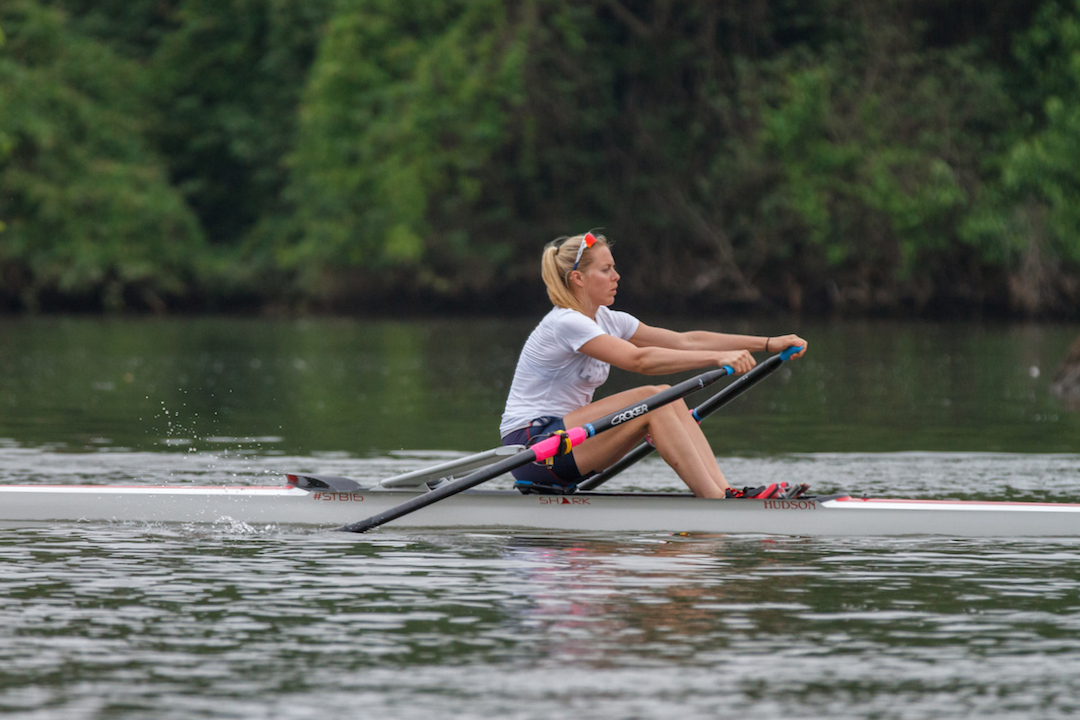Great Ones, Part 5: Consistency
 |
| Spracklen (Illustration: B. Kitch) |
There is no magical workout or training plan that makes Mark Hunter and Zac Purchase the fastest lightweight double in the world. Consistency is the key. They have trained well over a long period of time and allowed their bodies to adapt to the training. Gradually, they have become stronger and fitter, handling more training each and every year. When the duo came together in 2007, they had a great deal of work to do in order to catch the dominant LM2x of Mads Rasmussen and Rasmus Quist of Denmark, who had narrowly missed the medals in Athens. Given time, Hunter and Purchase gelled, and were able to put it all together at just the right time, taking gold in Beijing. Now, Hunter and Purchase are looking to repeat that performance in what is Hunter's home town (indeed, the Olympic Village will be located quite close to Hunter's childhood home).
In endurance sports, especially ones in which aerobic capacity and strength are key, the only way to significantly develop and improve these systems is over time. If we look at the best endurance athletes in the world, whether it's Haile Gebrselassie and his Olympic medals and world records in distance running, or Michael Phelps in the pool, there is one common theme in their ability to be at their current physical potential: consistency.
In an instant gratification, me-driven society, rowing and other endurance sports require a sense of delayed gratification and the discipline to log consistent work with long term goals in mind. Sadly, many people don't stay in our sport long enough to reach their potential. The physical peak for rowers is around 26-28 years old and requires about 10 years in the sport (http://www.runnersweb.com/
Like Mike Spracklen says in the above video, the program is always increasing the intensity. As the athletes get better, you step up the load accordingly. The training doesn't increase just because it is an Olympic year, it increases because it is what the athletes can handle. As the athlete is able to handle more, so the training plan changes and morphs over time.
There are two primary problems with non-elite athletes looking to the training of elite athletes looking for a training plan they can mimic, thinking it will lead them to the same success. First, if you are not at an elite level athlete, you probably shouldn't even be trying to do the same workouts in terms of volume and intensity as a more experienced, stronger athlete, because what works for them, is likely not what will work for you unless you are at the same stage in your strength and aerobic development. Second, and more important for purposes of this discussion, there is no magic formula in terms of a training plan that allows the great ones to be great! Sure there are better or worse training programs, and workouts need to be structured in a systematic way to complement each other by giving the athlete appropriate doses of the proper intensity levels balanced with the right amount of rest, but there is not just one best training plan. Just like there are a million ways to skin a cat, there are a million ways to structure a successful training program.
Now that doesn't mean any training works. Obviously, it must follow common principles of training that allow the body to become stronger and fitter over time through a successful combination of work and rest. There are many ways this can be done. Consistency is key. Stay injury free by means of well thought out, quality training. If you push too hard, you'll get hurt. There is no magic to it. Consistent application of energy an focus within workouts and from workout to workout, day to day, stroke to stroke will allow you to develop both technically and physiologically all the nuances and all the muscle memory required to be your very best. This is true whether your best is Olympic champion-level or average age-group rower. In many ways, this is the hardest part of training, but perhaps the most important. Let's face it -- one, kick-ass workout a month ain't going to hack it, no matter how hard you attack that training session. As an elite Danish rower once said, "The athlete who will win is the one who is willing to deal with the most repetition and boredom." In other words, not necessarily the one who works the hardest when he or she shows up at a training session, but rather the one who never misses a practice.
-The RR Editorial Staff

